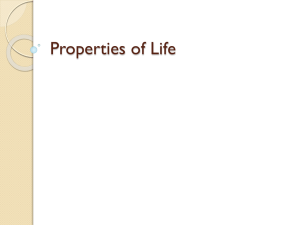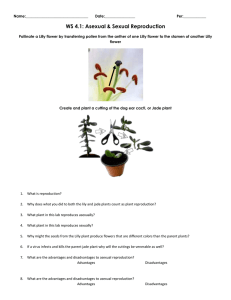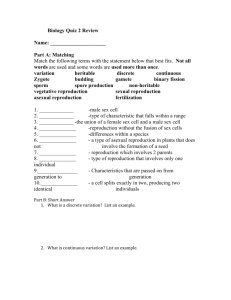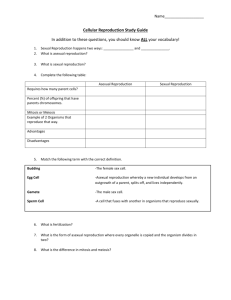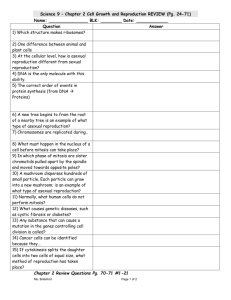Document
advertisement
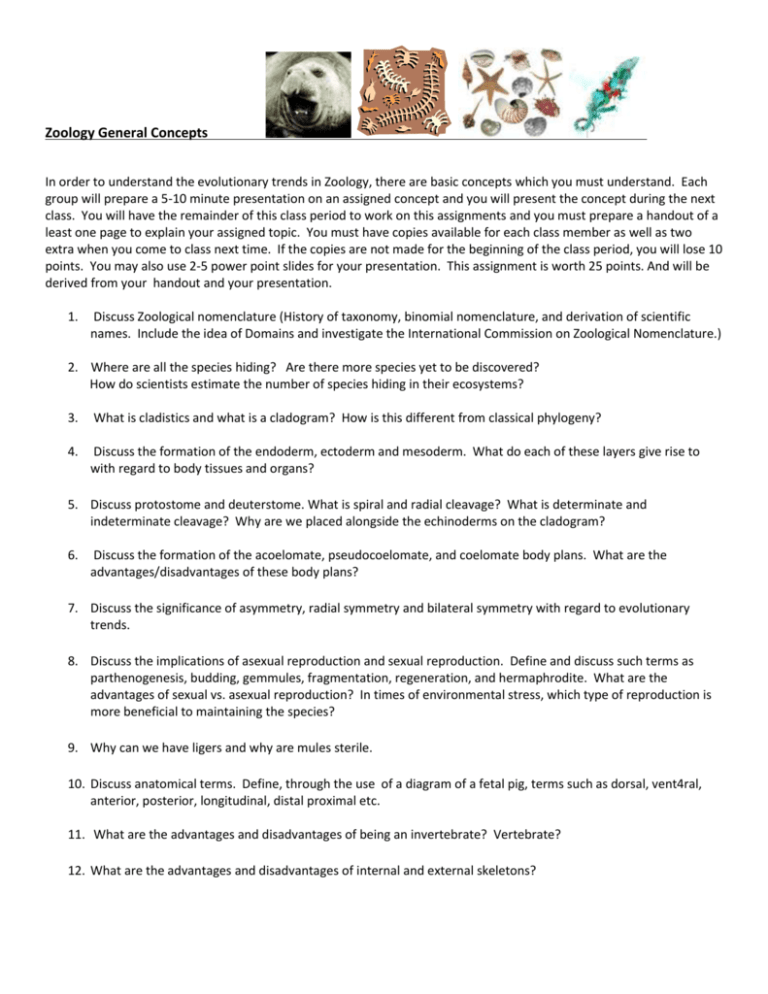
Zoology General Concepts In order to understand the evolutionary trends in Zoology, there are basic concepts which you must understand. Each group will prepare a 5-10 minute presentation on an assigned concept and you will present the concept during the next class. You will have the remainder of this class period to work on this assignments and you must prepare a handout of a least one page to explain your assigned topic. You must have copies available for each class member as well as two extra when you come to class next time. If the copies are not made for the beginning of the class period, you will lose 10 points. You may also use 2-5 power point slides for your presentation. This assignment is worth 25 points. And will be derived from your handout and your presentation. 1. Discuss Zoological nomenclature (History of taxonomy, binomial nomenclature, and derivation of scientific names. Include the idea of Domains and investigate the International Commission on Zoological Nomenclature.) 2. Where are all the species hiding? Are there more species yet to be discovered? How do scientists estimate the number of species hiding in their ecosystems? 3. What is cladistics and what is a cladogram? How is this different from classical phylogeny? 4. Discuss the formation of the endoderm, ectoderm and mesoderm. What do each of these layers give rise to with regard to body tissues and organs? 5. Discuss protostome and deuterstome. What is spiral and radial cleavage? What is determinate and indeterminate cleavage? Why are we placed alongside the echinoderms on the cladogram? 6. Discuss the formation of the acoelomate, pseudocoelomate, and coelomate body plans. What are the advantages/disadvantages of these body plans? 7. Discuss the significance of asymmetry, radial symmetry and bilateral symmetry with regard to evolutionary trends. 8. Discuss the implications of asexual reproduction and sexual reproduction. Define and discuss such terms as parthenogenesis, budding, gemmules, fragmentation, regeneration, and hermaphrodite. What are the advantages of sexual vs. asexual reproduction? In times of environmental stress, which type of reproduction is more beneficial to maintaining the species? 9. Why can we have ligers and why are mules sterile. 10. Discuss anatomical terms. Define, through the use of a diagram of a fetal pig, terms such as dorsal, vent4ral, anterior, posterior, longitudinal, distal proximal etc. 11. What are the advantages and disadvantages of being an invertebrate? Vertebrate? 12. What are the advantages and disadvantages of internal and external skeletons?

